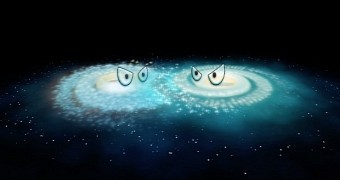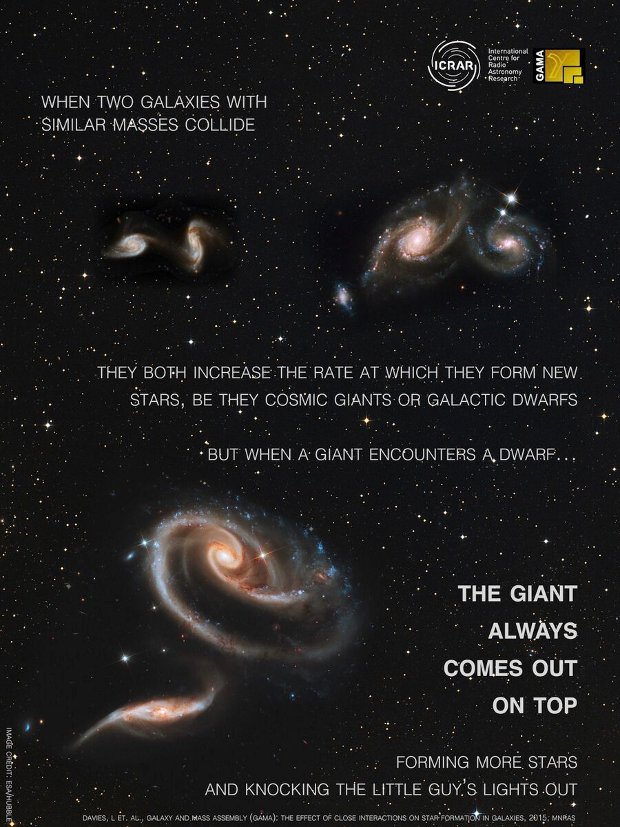Most of the galaxies that populate the cosmos hang out in clusters. Every once in a while, two galaxies get so close to one another that gravitational forces take over and guide them towards a head-on collision.
In fact, our home galaxy the Milky Way will one day smash into neighboring Andromeda, what with the two systems now heading towards each other at a speed of about 400,000 kilometers per hour (nearly 250,000 miles per hours).
The good news is that, although on a collision course, our Milky Way and Andromeda are still quite far away from each other and so the actual mashup won't happen for another 4 billion years or so. Then again, it's best we know what to expect.
In a new paper in the journal Monthly Notices of the Royal Astronomical Society, scientists with the International Center for Radio Astronomy Research explain what happens when two galaxies collide.
It's all about how big the galaxies are
Previously, it was believed that, when galaxies get too close for comfort and end up smashing into one another, all the commotion translates into intense star formation processes.
Apparently, this does not always happen. On the contrary, what happens to a galaxy in the aftermath of such an event very much depends on its size.
Specifically, data and images obtained with the help of space- and ground-based scientific instruments indicate that, when a large galaxy encounters a smaller one, the latter is forced into retirement.
“When one galaxy significantly outweighs the other, we have found that star formation rates are affected for both, just in different ways.”
“The more massive galaxy begins rapidly forming new stars, whereas the smaller galaxy suddenly struggles to make any at all,” says University of Western Australia scientist Luke Davies.
It is believed that this happens because the larger galaxy strips the smaller one of its gas reserves, thus making it impossible for it to birth any more stars.
On the other hand, collisions between galaxies of a similar size do, in fact, result in the birth of a army's worth of brand new stars forged from material set in motion by the merger, specialist Luke Davies explains.
What about the Milky Way and Andromeda?
Our home galaxy the Milky Way and neighboring Andromeda are approximately the same size and have a similar mass, which means that, when they do collide some 4 billion years from now, both will give birth to a whole lot of stars.
Although the merger will not happen for a long time, astronomers are already considering monikers for the new galaxy the Milky Way and Andromeda will one day form. By the looks of it, some have proposed the name Milkdromeda.

 14 DAY TRIAL //
14 DAY TRIAL // 

